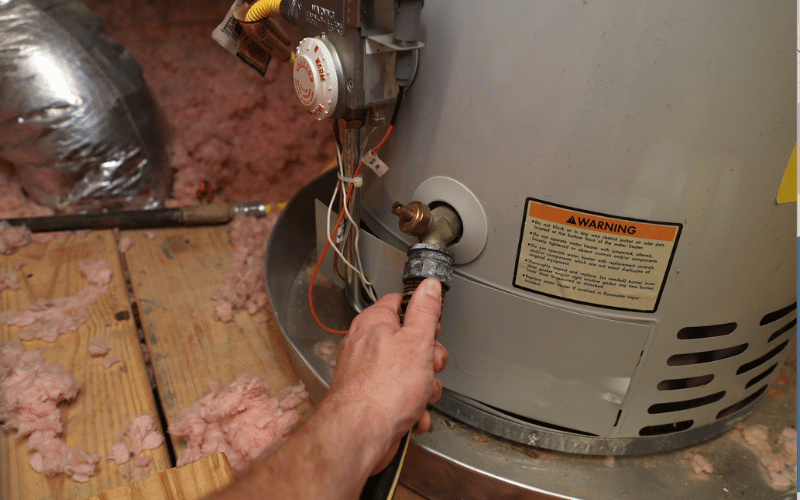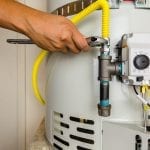Important Care Techniques for Your Home's Hot Water System
Important Care Techniques for Your Home's Hot Water System
Blog Article
What're your thoughts on Tips on Maintaining a Water Heater?

Warm water is necessary for everyday comfort, whether it's for a revitalizing shower or washing recipes. To guarantee your hot water system runs efficiently and lasts much longer, routine maintenance is key. This write-up supplies useful tips and understandings on exactly how to maintain your home's warm water system to avoid disruptions and pricey repair work.
Intro
Preserving your home's hot water system could appear difficult, but with a couple of easy actions, you can ensure it runs smoothly for many years ahead. This guide covers every little thing from comprehending your hot water system to do it yourself upkeep pointers and understanding when to call in expert help.
Value of Maintaining Your Hot Water System
Normal upkeep not just prolongs the life-span of your hot water system yet also guarantees it operates efficiently. Disregarding upkeep can lead to reduced efficiency, higher power costs, and also premature failing of the system.
Signs Your Hot Water System Demands Maintenance
Recognizing when your hot water system needs focus can prevent major concerns. Look out for indications such as irregular water temperature, odd sounds from the heater, or rusty water.
Comprehending Your Warm Water System
Before diving right into upkeep jobs, it's valuable to recognize the basic elements of your warm water system. Usually, this consists of the hot water heater itself, pipes, anode rods, and temperature controls.
Regular Monthly Upkeep Tasks
Normal regular monthly checks can aid capture small issues before they intensify.
Flushing the Hot Water Heater
Flushing your water heater eliminates sediment accumulation, boosting performance and prolonging its life.
Monitoring and Changing Anode Rods
Anode rods stop corrosion inside the container. Evaluating and replacing them when worn out is crucial.
Checking and Adjusting Temperature Level Settings
Changing the temperature setups ensures optimal performance and safety and security.
Do It Yourself Tips for Upkeep
You can do numerous upkeep tasks on your own to maintain your warm water system in top problem.
Checking for Leakages
Regularly evaluate pipes and links for leaks, as these can result in water damages and higher expenses.
Examining Pressure Alleviation Valves
Testing the stress relief valve guarantees it functions correctly and prevents extreme stress accumulation.
Protecting Pipelines
Protecting warm water pipes reduces heat loss and can save energy.
When to Call a Professional
While do it yourself maintenance is helpful, some concerns require specialist experience.
Complicated Concerns Requiring Expert Aid
Examples include major leaks, electrical issues, or if your water heater is consistently underperforming.
Regular Expert Maintenance Conveniences
Professional upkeep can include thorough inspections, tune-ups, and making sure compliance with safety and security requirements.
Verdict
Routine upkeep of your home's hot water system is important for performance, durability, and price savings. By complying with these tips and understanding when to seek expert help, you can make sure a reputable supply of warm water without unforeseen disruptions.
How to Maintain an Instant Hot Water Heater
Before tinkering with your hot water heater, make sure that it’s not powered on. You also have to turn off the main circuit breaker and shut off the main gas line to prevent accidents. Also turn off the water valves connected to your unit to prevent water from flowing into and out of the appliance. 2. When you’re done, you have to detach the purge valves’ caps. These look like the letter “T†and are situated on either side of the water valves. Doing so will release any pressure that has accumulated inside the valves while at the same time avoid hot water from shooting out and burning your skin. 3. When the purge valves’ caps are removed, you have to connect your hosing lines to the valves. Your unit should have come with three hoses but if it didn’t, you can purchase these things from any hardware or home repair shops. You can also get them from retail stores that sell water heating systems. Read the user’s manual and follow it to complete this task properly. When the hosing lines are connected, open the purge port’s valves. 4. You should never use harsh chemical cleaners or solutions when cleaning your unit. Make use of white vinegar instead. It should be undiluted and you’ll probably use about 2 gallons. 5. Now flush your water heater. This task should probably take about 40 minutes. We can’t give you specific directions for this because the procedure is carried out depending on the type, model and brand of your heater. With that being said, refer to the user’s manual. 6. When you’re done draining the unit, you have to turn off the purge port valves again. Remove the hosing lines that you earlier installed on each of the water valves. Put the valve caps (purge port) back in their respective places and be very careful so as not to damage the rubber discs that are found inside these caps. 7. Now that everything’s back in place, check your user’s manual again to find out how to reactivate your water heating system. 8. Once it is working, turn one of your hot water faucets on just to let air pass through the heater’s water supply pipes. Leave the tap on until water flows smoothly out of it. https://www.orrplumbing.com/blog/2014/september/how-to-maintain-an-instant-hot-water-heater/

As a passionate reader on Tips For Maintaining Your Hot Water Heater, I assumed sharing that information was essential. Remember to take a moment to distribute this entry if you enjoyed reading it. Bless you for being here. Come back soon.
Customer Reviews Report this page